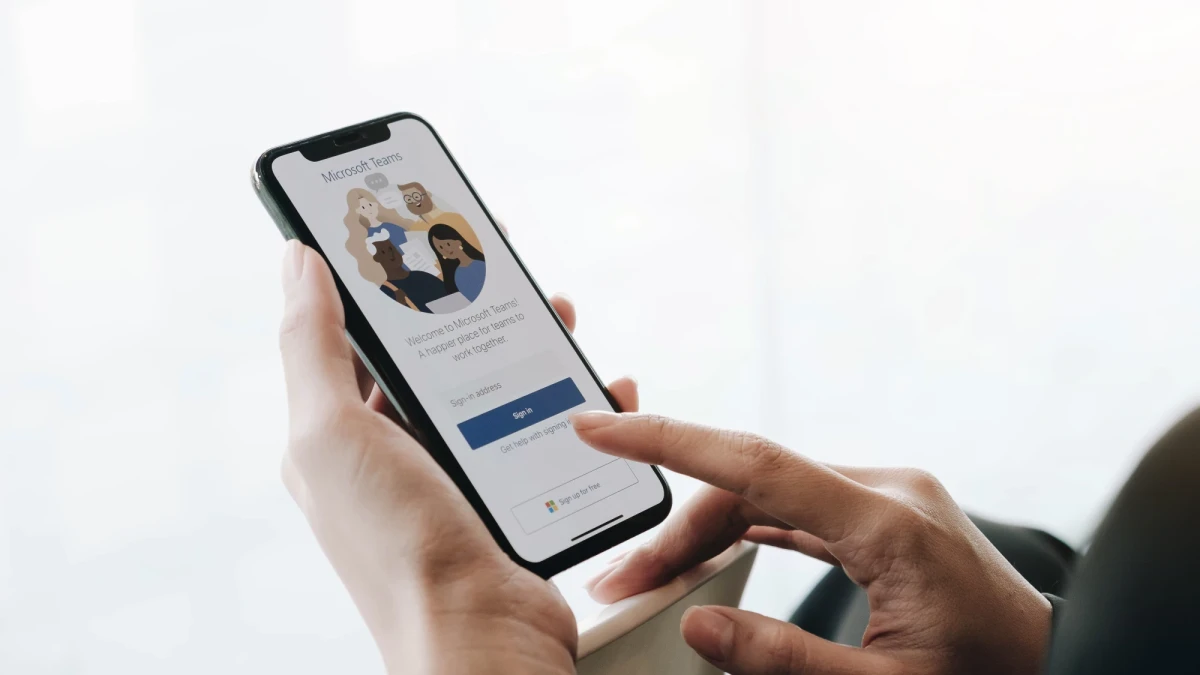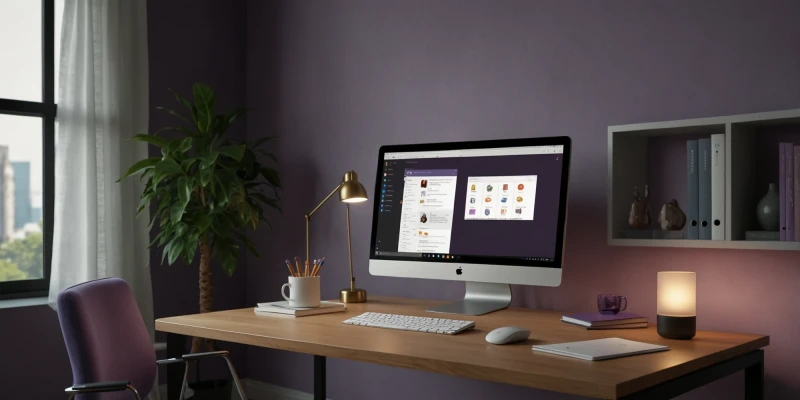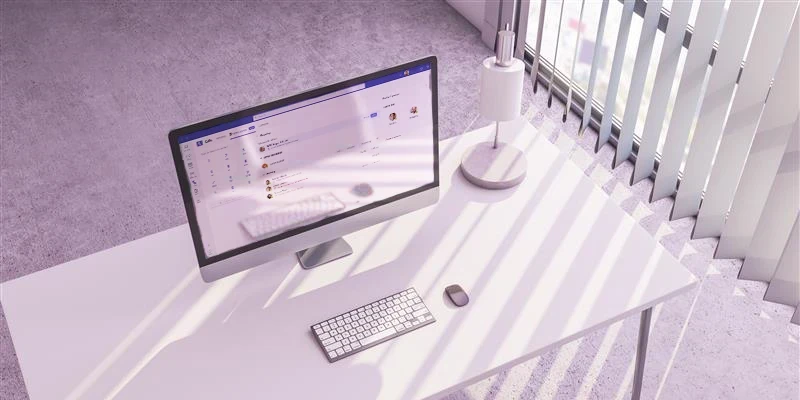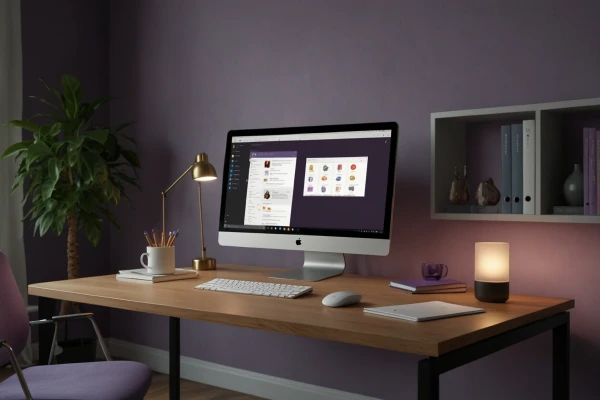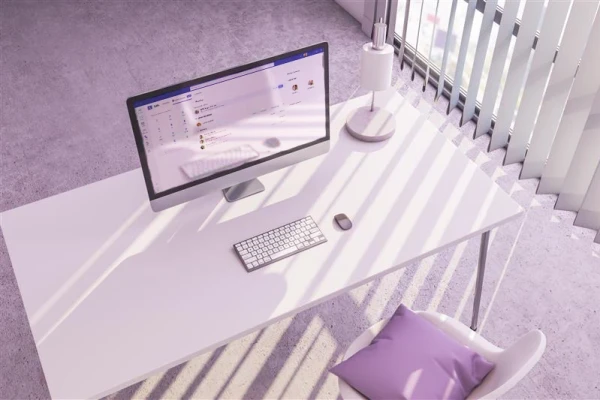Teams Phone: Migrate or integrate into existing telephone systems?
Teams Phone can be used flexibly - either as a stand-alone solution or as a supplement to existing telephone systems. Many companies decide to convert their existing systems completely to Microsoft Teams or to integrate both approaches. A migration to Teams Telephony is particularly suitable if support for the existing telephone system is coming to an end or if the Teams Telephony function is already included in the M365 plan. Our team of experts is at your side, whether you decide to migrate or integrate: We will advise you on the best strategy and implement it together with you.
Identifying the right architecture
Defining the target architecture is a key success factor, especially in large companies with complex requirements. Choosing the right architecture ensures that all business requirements are met and that the IT infrastructure remains future-proof. Important questions to ask are:
- Is your IT infrastructure prepared for Microsoft Teams Phone?
- Which requirements and performance features need to be covered? What availability and redundancy requirements exist?
- Should telephony be completely migrated to Microsoft Teams? For example, because the maintenance of the existing telephone system is coming to an end? Or should the existing telephone system continue to be operated in parallel?
- Are there several landlines or even different providers? Should these connections be consolidated?
- What type of Microsoft Teams landline telephony is supported in your location or by your provider?
- What economic conditions need to be considered? This includes analyzing costs and benefits.
By answering these questions, companies can make an informed decision and tailor the target architecture precisely to their needs.
Choosing the right migration strategy
Various migration strategies are available depending on the requirements and the chosen architecture. By choosing the right migration strategy, companies can efficiently migrate their communication systems without affecting ongoing operations.
Big bang migration
In a big bang migration, all users are migrated at the same time. This method is often used for smaller sites with few users. In some cases, however, a big bang migration may also be necessary due to external factors, such as the expiry of licenses and support for the existing telephone system, a change of provider or a changeover of contracts and technology.
Migration in user groups (“Waves”) with short-term parallel operation
With this strategy, Microsoft Teams Phone is activated in parallel with the existing telephone system. Users or user groups are gradually migrated from the telephone system to Microsoft Teams Phone. Typically, the migration begins with pilot groups, followed by further users in freely definable migration waves. The usual criteria for these waves are locations, buildings, departments or teams. Once all users have been successfully migrated, parallel operation can be ended and the telephone system decommissioned.
Long-term parallel operation and integration
In some scenarios, it does not make sense to migrate all users and phone types completely to Microsoft Teams Phone. Employees in the office environment are often migrated to Microsoft Teams Phone, while special device types remain on the existing telephone system. This includes, for example, large DECT (Digital Enhanced Cordless Telecommunications) environments or analog phones in production areas or warehouses. As long as the existing telephone system is still receiving support, it is often not economically viable to migrate these devices.
Integration of landline telephony
There are various ways to extend Microsoft Teams with landline telephony. In each case, users receive a telephone number in Microsoft Teams and can use it to make landline calls. Which type is right for your company and which is the most suitable depends on various factors.
We support you by asking the right questions, analyzing your requirements and comparing them with the respective prerequisites and functions. We show you the advantages and disadvantages of the individual options and help you to find the right type for your company, taking economic aspects into account.
Connection of end devices and third-party systems
When migrating from a telephone system, the central question is whether existing end devices such as telephones, analog devices or video conferencing systems can continue to be used.
Certain telephones and other end devices can be integrated into Teams Phone without any problems and with the full range of functions. Others, however, are not compatible and must be replaced. There are also devices that can be used, but with a limited range of functions.
The situation is similar with third-party systems such as fax servers, contact center solutions or DECT systems. Some of these systems can be seamlessly integrated into Teams telephony, while others can only be integrated with considerable effort or not at all.
We analyze your existing infrastructure, examine the various possibilities and evaluate which options make sense both technically and economically. We take a pragmatic approach: not every existing device needs to be replaced by a Microsoft Teams-certified model. It is also not always advisable to continue using all devices that are compatible in principle, especially if high migration or operating costs and technical restrictions could arise.
- SIP devices: Microsoft certified SIP (Session Initiation Protocol) devices include analog adapters, cordless phones and SIP phones from many manufacturers. This means that existing analog devices, telephones and even exotic device groups can continue to be used with Microsoft Teams.
- Analog devices: Fax machines, analog telephones and special devices, such as door openers or gate controls, are still present in many companies. They can be connected via analog adapters or gateways.
- DECT or Wi-Fi cordless telephones: Cordless telephony is often found in warehouses or production areas.
- Fax server: Fax servers are often used as a more modern alternative to fax machines.
- Contact or call center solutions are available in various forms. Microsoft Teams telephony already offers many of these functions natively. At the same time, it is possible to seamlessly connect existing systems.
Our expertise - your benefits
We have extensive experience in the integration of existing telephone systems and in the complete migration to Microsoft Teams Telephony. Our successfully implemented projects include migrations for small and medium-sized companies in Germany and Europe as well as the planning, design, implementation and management of demanding strategic projects in the national and international enterprise environment.
We have successfully connected and migrated telephone systems from renowned manufacturers such as Avaya, Cisco and Siemens/Unify. We also have many years of experience in the planning and implementation of migrations from Skype for Business Server to Microsoft Teams.
Learn more

“Microsoft Teams Phone as your new telephone system - future-proof business telephony: flexible, seamlessly integrated and accessible everywhere - for modern communication without borders!”
